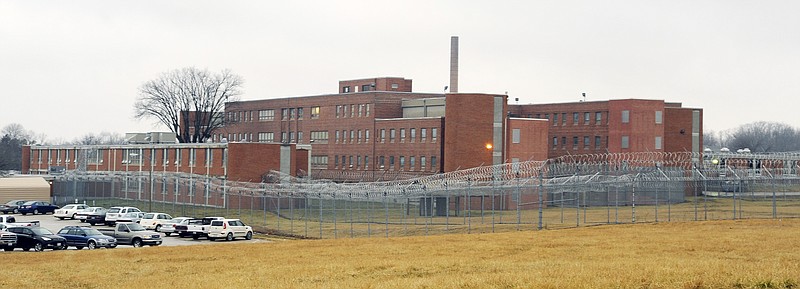Although Fulton State Hospital has a reputation for being the most dangerous place to work in the state of Missouri, at its heart it is a hospital whose mission is healing people.
On Thursday, a small group of lawmakers toured the facility to learn more about its challenges and shortcomings. The tour was requested by Rep. Sue Allen, chairwoman of the Missouri House Appropriations Committee for Health, Mental Health and Social Services and attended by Rep. Jeanie Riddle, R-Mokane, a reformer who has been instrumental in advocating for the people who live and work there.
Because the hospital is in her district, Riddle is the first person people call when a problem arises, and sometimes the first to rush to the emergency room when a staffer is injured.
Before Thursday's tour, Riddle discussed her concerns with journalists.
"It's the most dangerous place to work in Missouri," she said.
That may be true, but it's still a hospital, not a prison.
The people who live there are called patients, not offenders. They wear street clothes, not uniforms or scrubs. Although their rooms tend to be devoid of all but the most essential personal belongings, their doors are not locked at night. Staff control patients with their hands and their voices, not stun guns or tear gas.
"We offer the same standards of care as any other hospital," said Mark Stringer, director of the Division of Behavioral Health.
The hospital is accredited by The Joint Commission, a nonprofit organization that accredits more than 19,000 U.S. hospitals, health care organizations and programs.
The hospital has four main treatment units: Biggs Forensic Center, a maximum-security facility with 186 beds; Guhleman Forensic Center, an intermediate-security facility with 91 beds; Sex Offender Rehabilitation and Treatment Services, a high-security facility for sexually violent predators with 75 beds; and Hearnes Forensic Center, a minimum-security facility with 24 beds.
But the hospital is managed by the Missouri Department of Mental Health, not the state's Department of Corrections. More civil liberties are permitted.
"And we have better food, too," said Ken Lyle, chief financial officer at the hospital.
Of the approximately 333 people who live at Fulton State Hospital, the bulk - 37 percent - are there to be prepared to stand trial. Among the rest, 28percent are held under civil court detention; 14 percent are considered sexually violent predators; 7 percent have been placed there by a guardian; 5 percent are considered not guilty of committing a crime by reason of insanity; and 5 percent are undergoing pretrial evaluations.
Some patients will spend a few days or weeks at the facility; others likely never will leave.
But, bottom line, Fulton State Hospital is the last stop for people whose behavior can't be controlled safely. It is a place for people who are considered dangerous to others, Stringer said.
Stringer said in the late 1980s, a psychiatric patient in a Kirksville treatment facility beat a seasoned, experienced nurse to death. That patient was sent to Biggs, and now resides in Guhleman. Staff have little control over who arrives, and even less over who leaves.
"There's no place to go beyond Fulton State Hospital," he said.


